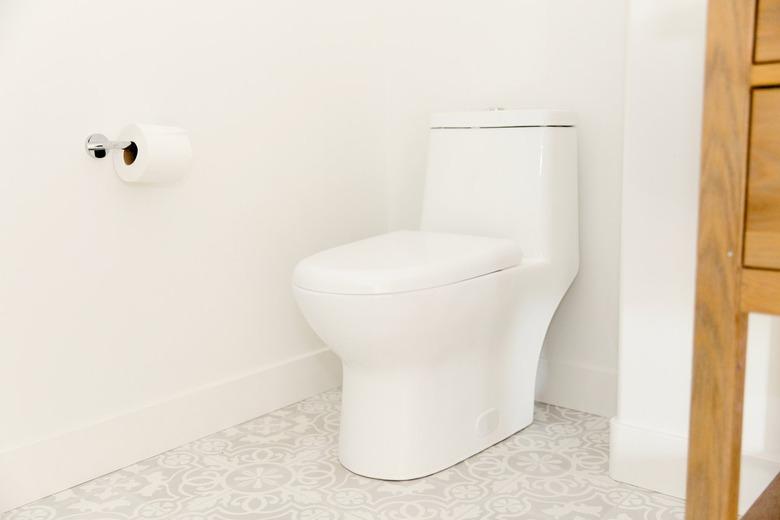What Are The Causes Of Blue Stain In A Toilet Bowl?
The stains that mar the inside of your toilet bowl can take on practically all the colors of the rainbow. Black and brown ones are usually due to iron in the water or rust in the pipes. Pink ones are caused by the relatively harmless bacteria Serratia marcescens, and whitish and yellowish ones are calcium deposits. If your toilet water turned blue or green, there are two possible causes.
The first cause is a fairly obvious one: You regularly drop blue disinfectant tablets into the toilet tank. They turn the tank water blue, and when you flush, that water goes into the bowl, and the blue dye eventually creates a ring. The second cause is copper, which could be present in your water supply, or it could be coming from your plumbing pipes. If it's the latter, the blue stains are a warning to check your pipes because they are corroding.
Tip
Blue stains in a toilet bowl are caused by either disinfecting tablets or copper in the water supply or from your pipes.
Copper in the Water
Copper is a common trace mineral in groundwater, and it exists in higher concentrations in some places than in others. It's highest in places with acidic groundwater because it dissolves more readily in water with a low pH. If you're on a municipal water system, check with your water company about the presence of copper in the water. If you get your water from a well, it's a good idea to have the water tested. Low concentrations of copper aren't a health hazard, but the danger increases if the concentrations rise.
If tests confirm low copper concentrations in your water supply and you're still seeing blue coloration and bluish stains, it's probably corrosion from your copper pipes. Copper doesn't rust, but it does form a blue-green patina of copper oxide. That usually stays on the outside of the pipes, so if you're seeing it in the water, it means it's seeping in through a joint or fitting. It's worth calling a plumber to investigate.
Toilet Tank Tablets
Those disinfecting tablets you drop into the toilet tank have a blue dye for a reason: It's to remind you that there is disinfectant in the water, and you should be careful about combining it with other cleaning chemicals. The blue dye coalesces around the water line, and if you don't flush often, the stains get darker and darker. Besides turning the toilet bowl blue, the dye can splash around and make blue stains on the toilet seat.
The blue dye stains can also coalesce underneath the rim of the toilet bowl where water flows in from the tank. Although they are caused by a cleaning agent, they look somewhat unsanitary, and you can't get rid of them simply by using the toilet brush. On the whole, however, they are easier to remove than copper stains because they aren't fixed into the porcelain.
Getting Rid of the Blue Stains
The good news about copper stains is that they tend to form a ring around the water line, and that makes them easier to remove. All you have to do is pour a mild acid, like vinegar or lemon juice, into the bowl water and let it sit for a few hours before flushing. You can also get rid of them by pouring a bottle of Coca-Cola into the bowl. Coke contains phosphoric acid, which will dissolve copper deposits.
Erasing blue dye rings is even easier. Just drop one or two denture cleaning tablets into the water, give them a few hours to fizz, and then brush away the stains with a toilet brush. For dye stains above the water line and on the seat, moisten a paper towel with rubbing alcohol and rub them off.
If these techniques don't work, rub away the stains with a pumice stone. Rub carefully and not too often because pumice stones can scratch porcelain if you're too aggressive.
